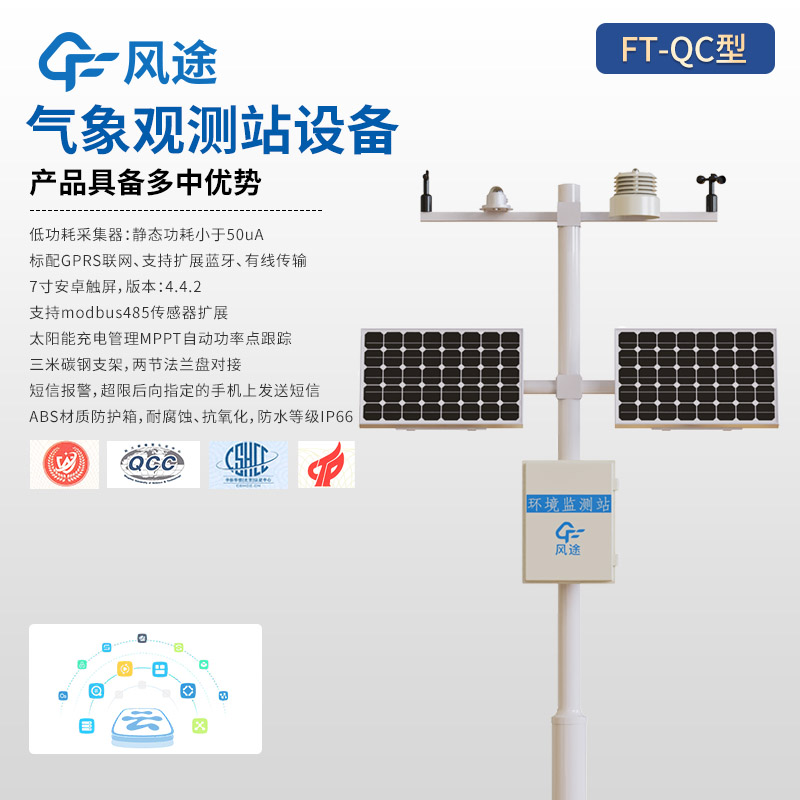Meteorological environment monitoring equipment supplier
Insist on doing high-precision customer favorite technology products
Speaking of a weather station, it is a facility dedicated to collecting and measuring atmospheric conditions, which is extremely important for predicting weather, studying climate change and guiding agricultural production. It will be equipped with a variety of precision instruments - sensors, data collectors, system power supply, communication interfaces, data analysis and display platforms, etc. Each instrument has a specific function, and together they form a complete meteorological observation system. Today to talk about these devices and their role.
1. Sensors
There are many sensors in a weather station, such as thermometers, barometers, hygrometers, rain gauges, radiometers, soil temperature and humidity sensors, and so on. Thanks to the integration technology nowadays, many sensors have an integrated design, for example, there are soil sensors that can directly measure soil temperature, humidity, and electrical conductivity at the same time. There are also meteorological sensors can directly measure more than ten items, compared to the traditional separate sensors, integrated sensors have the advantage that they are smaller, more reliable, and easy to integrate into a variety of equipment, simplifying the design and manufacturing process.
2. Data Collector
It is the hub of the automatic weather station, responsible for the fast and accurate collection of all kinds of weather data and processing them through built-in algorithms. It has to have durable power support to ensure continuous operation for at least a week, and enough storage space to keep detailed weather records for at least three days. It also converts the data into a computer-readable format for further analysis and application of the data.
3. System power supply
Weather stations are usually powered by mains electricity, which is directly connected to the public grid. But the problem comes, many weather stations are installed in remote field, there is no condition to use the utility power. So manufacturers will configure several solar panels, built-in battery storage power, power can be supplied for a week.
4. Communication interface
Communication interface is a key link between the internal equipment of the weather station and the data analysis platform, mainly including wired network, wireless network, satellite communications, radio, mobile network technology (such as GPRS, 3G, 4G), low-power wireless communication technology (such as ZigBee, LoRa), the traditional serial communication interfaces (such as RS-232, 485), as well as USB interfaces and so on. These interfaces enable the weather station to flexibly transmit the collected data to a remote server or data processing centre, regardless of whether the weather station is located in a city or a remote area.
5. Data analysis and display platform
Equipped with data visualisation and real-time monitoring functions, they enable users to intuitively view and analyse meteorological data, such as temperature, precipitation and wind speed. These platforms are able to convert complex data into charts and maps, making it easy for users to quickly access information and make decisions.
These are the structural components of a weather station. As an important facility for observing and recording natural meteorological phenomena, it not only provides us with valuable data on weather changes, but also plays an irreplaceable role in predicting disasters, guiding agricultural production and planning urban development.
